Comments on CPS Energy, Winter Storm Uri & the CEP Report
After the Winter Storm Uri disaster of February, the Mayor of San Antonio, Ron Nirenberg, appointed a Community Emergency Preparedness (CEP) Committee to evaluate the handling of the storm event by our two publicly-owned utilities, CPS and SAWS, and by the City’s Emergency Operations Center (EOC). This Committee, chaired by former City Councilman (CD8) and former SAWS Board Member Reed Williams, also included current Council Members Rocha-Garcia (CD4), Sandoval (CD7), Pelaez (CD8) and Perry (CD10).
The Committee issued its report Thursday June 24 and also published a webpage of committee questions and responses. There are a number of important findings, and here I focus on CPS. They received the most detailed questions from the CEP, and their failures had major secondary impacts on EOC and SAWS, exacerbating an already very difficult situation for San Antonio residents and businesses.
- The Report makes very clear major failures at the level of State Government, failures that were left largely uncorrected by the recent Legislature. I conclude:
- The simplest, most reliable and cheapest way to enhance our grid resiliency is to connect to other grids! This is anathema to our anti-American Republican state leaders. However, in a time of crisis such as Uri, energy could have reached our citizens and prevented hundreds of deaths, thousands of freezing pipes, home disasters etc. It is unconscionable that our leaders failed to take this action, as lone Republican with sense Lyle Larson has pointed out. With national grid connections ERCOT would not have needed massive load shedding to avert total grid collapse.
- The previous disaster of 2011 provided fair warning of this year’s possible failures, but the State failed to take meaningful action then and most companies chose to forego or minimize winterization expenses. State Representative Larson acknowledged this in an Express News statement.
- Inter-grid connections could greatly enhance growth and profitability in Texas renewable energy resources. Our renewable resources are often so abundant within the state that they are sold at prices near zero. If those energy supplies could reach the East or West regional grids they could bring revenue into Texas and support further renewable energy here, good for the economy and good for the climate.
- The ERCOT market was sabotaged by price fixing by the Texas Public Utility Commission (PUCT) which artificially fixed prices extremely high for several days. There was no need for this because it had no effect on energy supply since the supply problem related to production that could not be increased because of non-price related failures.
- CPS failures in this crisis were massive and historic:
- Two huge portions of CPS Energy production--so called base load resources (i.e. dependable in all situations!) failed catastrophically. The older Spruce 1 coal plant energy production dropped from 100% to 1% by 2/15/2021, and did not recover past 40% capacity until after the crisis ended on 2/19. The South Texas Nuclear Plant (STP), of which CPS is part owner and manager, had a water pressure sensor line freeze, resulting in multi-day shut down of STP 1.
These two failures cost CPS $850 million in lost revenue if that energy had been available on the grid. Their failure was also a huge 100,000 MW-hour loss of energy production when SA and Texas needed it most for basic survival. - CPS’s older regenerative natural gas plants, that supposedly provide rapid ramp up and rapid shut down capacity as needed, in fact only achieved about 55% capacity production during Storm Uri. Natural gas shortages contributed to this failure, and CPS had to buy large amounts of gas at extremely high market prices. During the week of Storm Uri, as a result of a. and b., CPS incurred a sudden unplanned debt of about $1 billion! We the rate payers are stuck with this bill.
- Two huge portions of CPS Energy production--so called base load resources (i.e. dependable in all situations!) failed catastrophically. The older Spruce 1 coal plant energy production dropped from 100% to 1% by 2/15/2021, and did not recover past 40% capacity until after the crisis ended on 2/19. The South Texas Nuclear Plant (STP), of which CPS is part owner and manager, had a water pressure sensor line freeze, resulting in multi-day shut down of STP 1.
- CPS took partial but obviously insufficient action after the 2011 storm to winterize its facilities. Maybe they should have restrained their near annual habits of giving themselves multimillion dollar management bonuses, and spent more on winterizing our base load!
- Austin Energy is not mentioned but is good for comparison. In Storm Uri they kept their plants running and were able to actually profit $54 million that week.
- Last year our local Sierra Club was part of a Recall CPS coalition that worked to alert citizens to chronic mismanagement at CPS. It is fair to now say “we told you”.
CPS failures in Uri were multiple, predictable and largely inexcusable. Their CEO and Board of Trustees (BoT), exemplified by the fossil fuel Ed Kelley, over many years obstructed and ignored respectful input from the environmental and social justice communities. It is now a time similar to the CPS collapse a decade ago when warnings on nuclear power expansion were ignored until cost overrun scandals finally became public and the project had to be abandoned and the BoT largely replaced. - The new City Council (CC) needs to stop rubber stamp approval of all that CPS (and SAWS) does. They need to learn about our utilities. They need a permanent CC subcommittee providing oversight of SAWS and CPS with full access to utility information, and robust public input.
- CPS has hired expensive outside legal counsel to fight its $1 billion debt, with little chance of success. It appears 3 in-house CPS attorneys resigned in protest, possibly of the strategy and/or the hiring of law firms to do things the in house attorneys can do at far lower cost. Perhaps outside consultations would be appropriate, and a lot cheaper.
Perhaps this whole effort is mostly for publicity. These attorneys join a number of other high ranking managers that have left CPS in the last 12 months, including Chief of Operations Chris Eugster. Greg Jefferson, Business Editor at SAEN has speculated in print that CPS CEO Paula Gold-Williams will be gone by the end of the year. - CPS also hired high dollar outside law firms to stop our Recall CPS PAC Charter Amendment petition drive, filing a Strategic Lawsuit Against Public Participation (SLAPP). We are appealing this egregious case that denies the public its constitutional right to petition. The Mayor and City Council could immediately direct CPS to voluntarily dismiss this high cost case, done in the name of COSA and at citizen expense.
Every Little Bit Helps – Improving Habitat for Biodiversity
No effort is too small when it comes to helping our native flora and fauna! Join Lee Marlowe and Martin Reid, at our July General Meeting on Zoom, as they discuss some of the plant-animal associations of our region, and how you can help support them.
Tuesday, July 20th
6:00 p.m.
Online via Zoom
This dedicated team will share their considerable expertise about plant species and the animals they support, including birds, butterflies, solitary bees and other pollinators. They will also tell us about practical management approaches to maximize habitat benefits, and other simple ways to help our local wildlife in small and urban settings. Lee spoke to us in June 2019, about low impact development. This presentation promises to be just as informative and enjoyable.
Zoom Meeting Details
| Informal get-to-know-you | 6:00 pm to 6:15 pm |
| Announcements | 6:15 pm to 6:30 pm |
| Featured Program | 6:30 pm to 8:00 pm |
RSVP by Monday, July 19th, 2 pm for a confirmation email and Zoom link, with “Alamo Group RSVP” in subject line, to: AlamoGroupMeetings@lonestar.sierraclub.org
About our Speakers
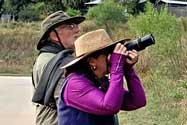
Lee Marlowe is the Sustainable Landscape Ecologist for the San Antonio River Authority and currently serves as the President of the San Antonio Chapter of the Native Plant Society of Texas. She is a restoration ecologist with over 20 years of professional experience working in the field of ecological restoration and natural resource management.
Martin Reid is an avian specialist who has worked in a variety of jobs more-or-less associated with birds and birding for almost 30 years. He is a past Report Secretary for Christchurch Harbour Ornithological Society, a past President of Fort Worth Audubon Society, and a past member and webmaster of the Texas Bird Records Committee. Martin has found four species of bird new for Texas, five species of dragonfly new for the US, and two species of butterfly new for the US.
This meeting is free and open to the public.
Earthen Construction Initiative Receives $25,000 Grant
Earthen Construction Initiative (ECI) is proud to announce receipt of a $25,000 matching grant from the AIA Upjohn Research Initiative 2021. ECI is one of four (4) recipients for this prestigious annual award.
Research projects were required to help mitigate or adapt to climate change as outlined in AIA’s 2020 Climate Action Plan. Selection criteria included:
- Demonstration that the research enhances the value of design and/or professional practice knowledge
- Innovation
- Evidence of collaboration/partnership
- Validity of research method
- Strength of projected outcomes related to alignment with theme
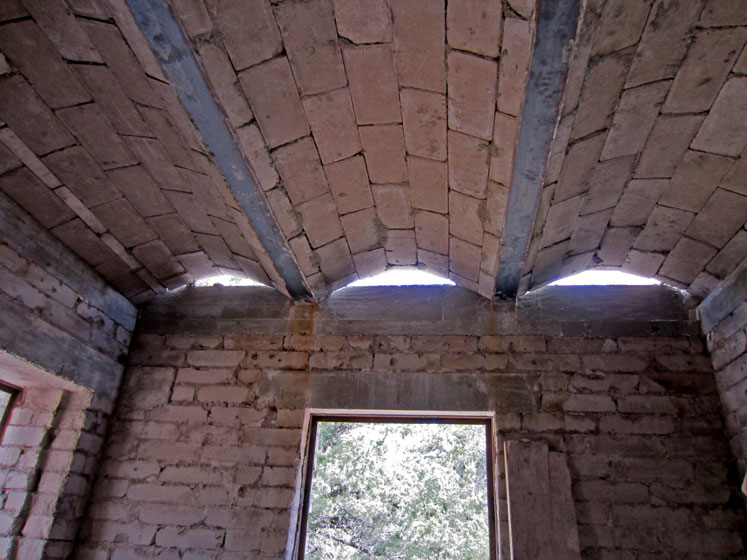
ECI’s project is Mix Design Standard and Strength Gain Correlations Testing for Stabilized Compressed Earth Block (SCEB) Units. Earthen construction is gaining a limited yet strong following in the United States. However, due to a current lack of tested standards for quality assurance and the absence of commercially available mixes specific to earthen construction, it is challenging for architects, engineers, contractors, and owners to procure and process materials consistently and effectively.
ECI’s Mix Design Standard will provide guidelines for the material selection, testing, and mixing process to reliably produce SCEB units on a small-to-medium scale using commercially available equipment. Introducing production guidelines will make earthen construction a more durable and cost-effective option for healthy construction – resilient legacy buildings with smaller carbon footprints for the owners, the community, and the planet.
ECI will also perform compressive strength gain correlation testing to determine if SCEBs can be used sooner than the standard 28-day curing period. Testing results may enable streamlining of block fabrication and construction projects.
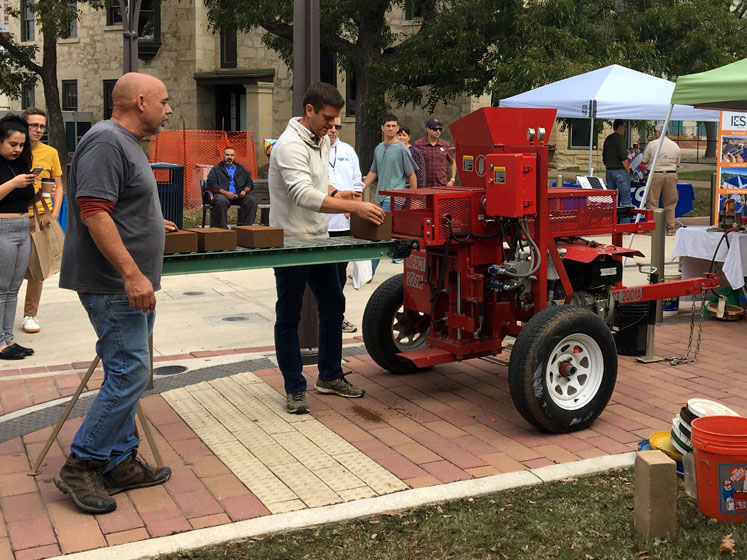
This research project is a partnership between ECI and Maritech Engineering, Inc; Wiss, Janney, Elstner Associates, Inc; De la Tierra; and Arquitecta. ECI is actively seeking participation by the professional and construction industries for future research and projects.
Earthen Construction Initiative, founded in 2016 in San Antonio, Texas, is a 501(c)(3) nonprofit organization whose mission is to advance and promote earthen construction.
by Celia Mendoza, Secretary, Earthen Construction InitiativeGrand Staircase-Escalante National Monument! Wolverine Canyon!
GSENM is vast and varied. One example is the Wolverine Petrified Wood Area. A Utah Geological Survey article says this is one of the largest fossil forests in the world. The location is off Wolverine Loop Road in the northeast section of GSENM, due east of the town of Escalante, Utah. Here's a GSENM PDF map. Wolverine Road, #110 on the map, is a 27 mile excursion south off Burr Trail. If you do Wolverine don't be tempted by the Cutoff Road #111 “shortcut” (serious spots of high clearance and sharp rocks!)
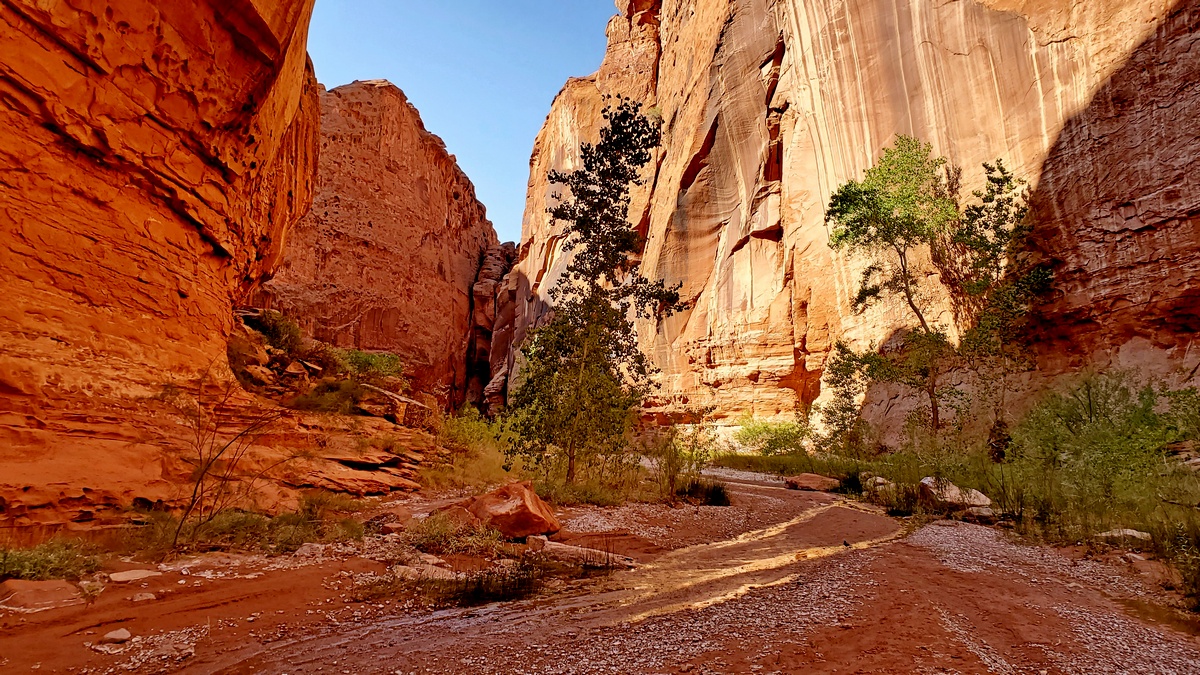
I did a 12.5 mile loop hike down Wolverine Creek and back up Wolverine Canyon in October 2020. The trailhead sign has a picture of an enormous petrified log. Going down Wolverine Creek I wondered where that log was but only saw scattered sections of logs and occasional smaller bits. This was a lovely hike, with only minor slopes until I did a detour across a ridge nearing the head of Wolverine Canyon, per the 5th picture below. Climbing that ridge I imagined I understood what had happened here.
There may have been a tiny volcanic eruption in the area (tiny compared to the Yellowstone caldera, of which there were a few pictures from in the January 2019 issue of this newsletter) which had buried a forest. The trees petrified instead of decaying and disappearing. Some of the petrified wood is apparent in the creek and canyon proper, but I only saw a LOT of petrified wood when I was crossing the ridge. I later found the Utah Geological Survey article linked above about Wolverine, and decided my imagination maybe got too specific.
There are a zillion more hikes that can be done in GSENM. This national monument is managed by the BLM (Bureau of Land Management) and was established by President Clinton in 1997 at 1.9 million acres. It was reduced by President Trump in 2017 to 1 million acres to allow mining. One of President Biden's first executive actions was to initiate the reversal of Trump's action, similarly along with Bears Ears National Monument which is not far east. We can keep current on how this is going at the Grand Staircase Escalante Partners news page.
There was a good article on GSENM in Outside March 4th 2019, The Theft of Grand Staircase–Escalante. And a Dirtbag Diaries podcast likewise, Endangered Spaces, July 12th 2019.
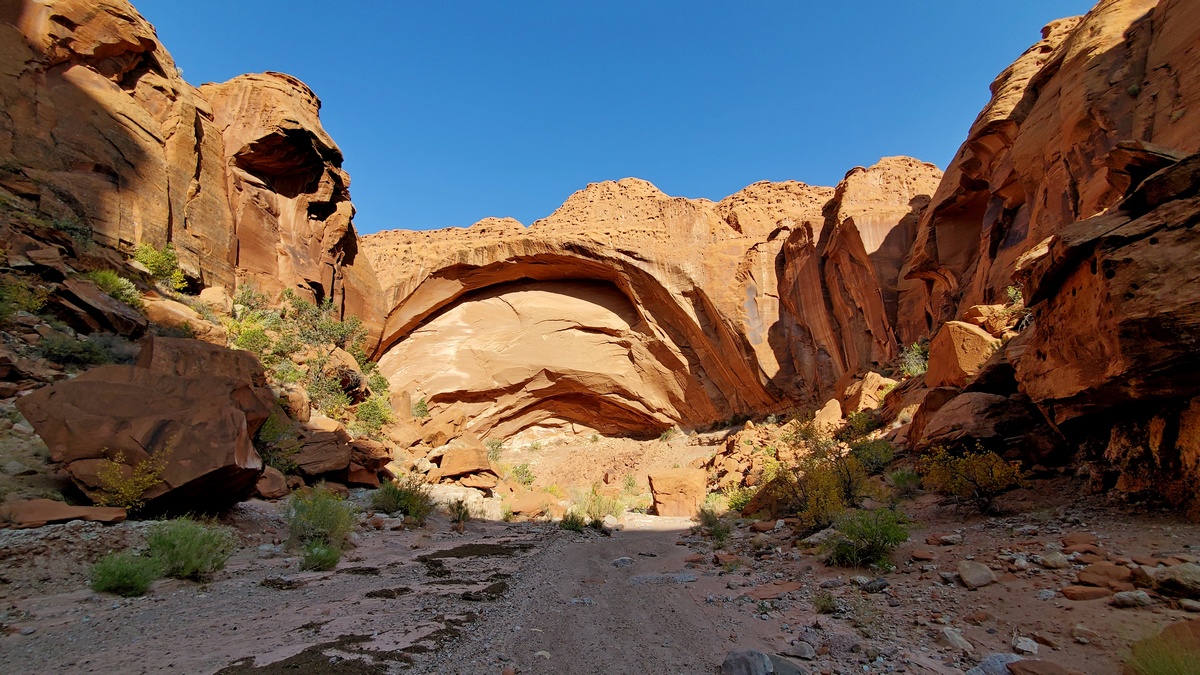
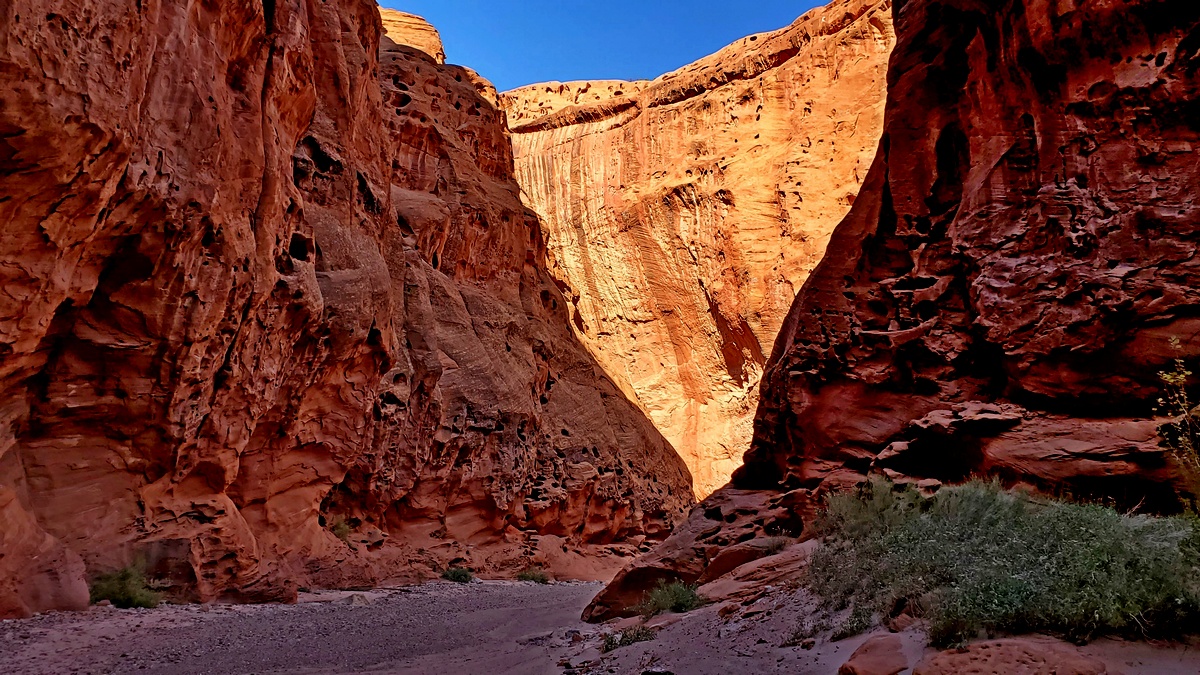
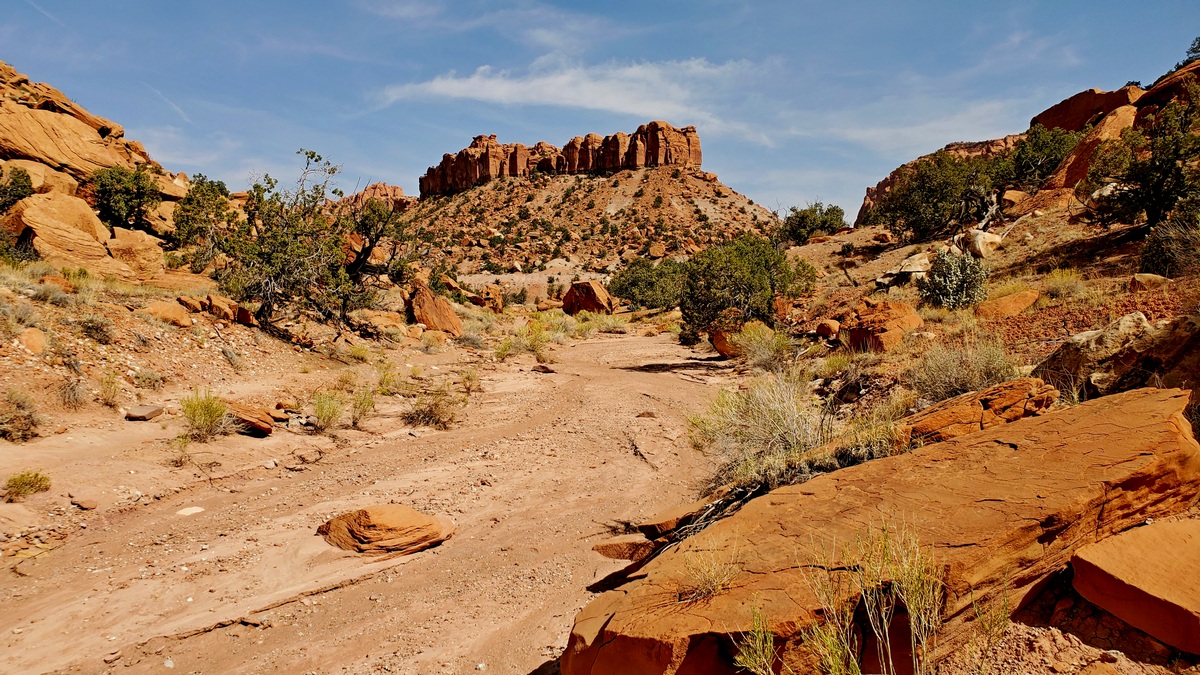
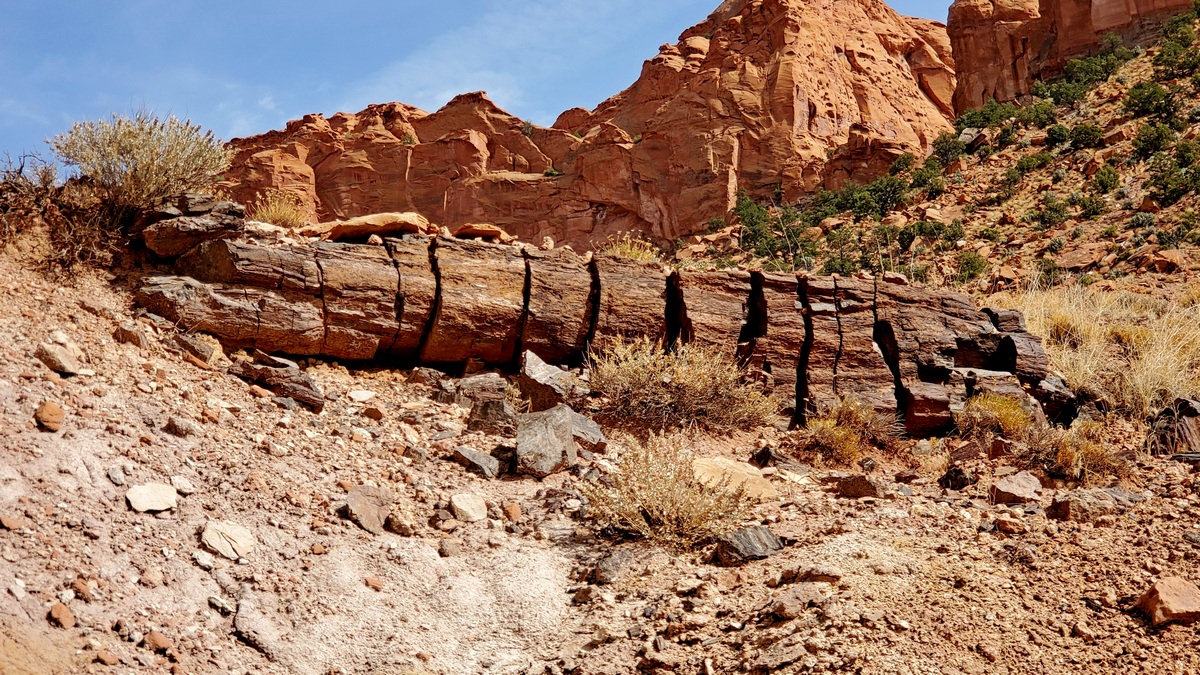
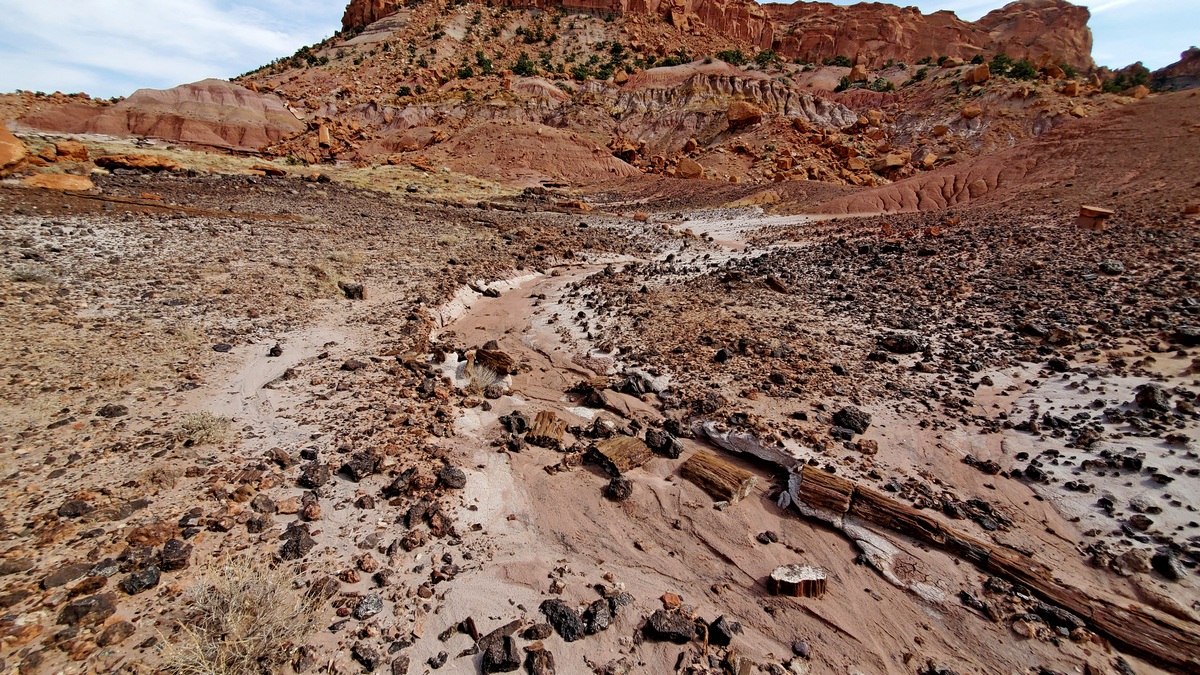
Further to the picture below with the Circle Cliffs on the horizon right. Here is an extensive article on the geology of this area of Utah. Lots of pictures and a map.
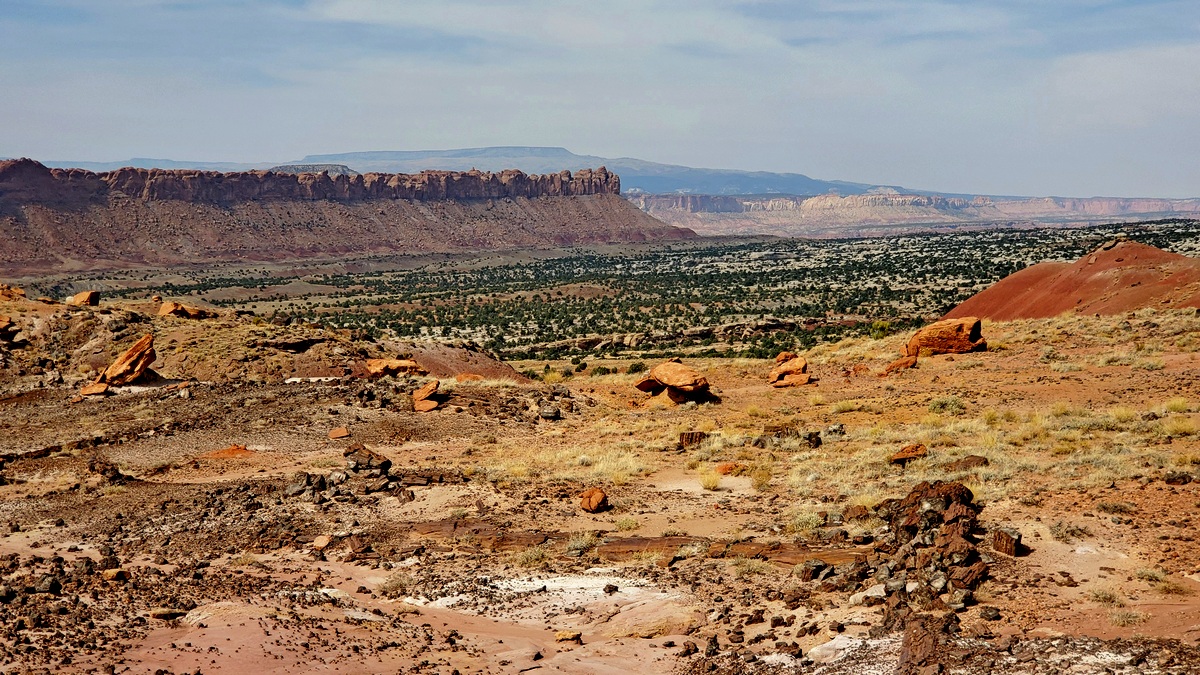

Outings: The Call of the Wild
Visit the Alamo Sierra Club Outings page on Meetup for detailed information about all of our upcoming Sierra Club Outings.
The Alamo Sierran Newsletter
Richard Alles, Editor
Published by The Alamo Group of the Sierra Club, P.O. Box 6443, San Antonio, TX 78209, AlamoSierraClub.org.
The Alamo Group is one of 13 regional groups within the Lone Star Chapter of the Sierra Club.
Changed your contact information?
If you're not sure whether the Sierra Club has your current email address, send an email to Member Services with your name and address and/or member ID (see Locating Your Member ID) so they can add your email address to your member record.
Have you moved? Let us know by sending your old address, your new address and your member ID to: address.changes@sierraclub.org.
Go online for the latest news and events
 |